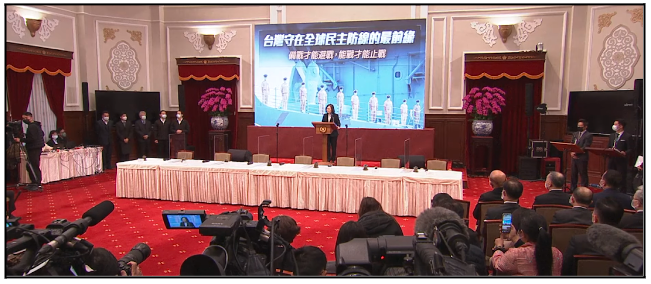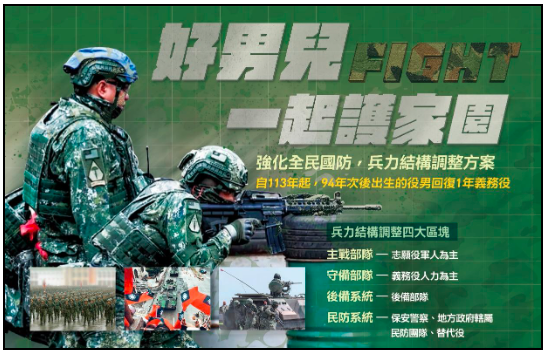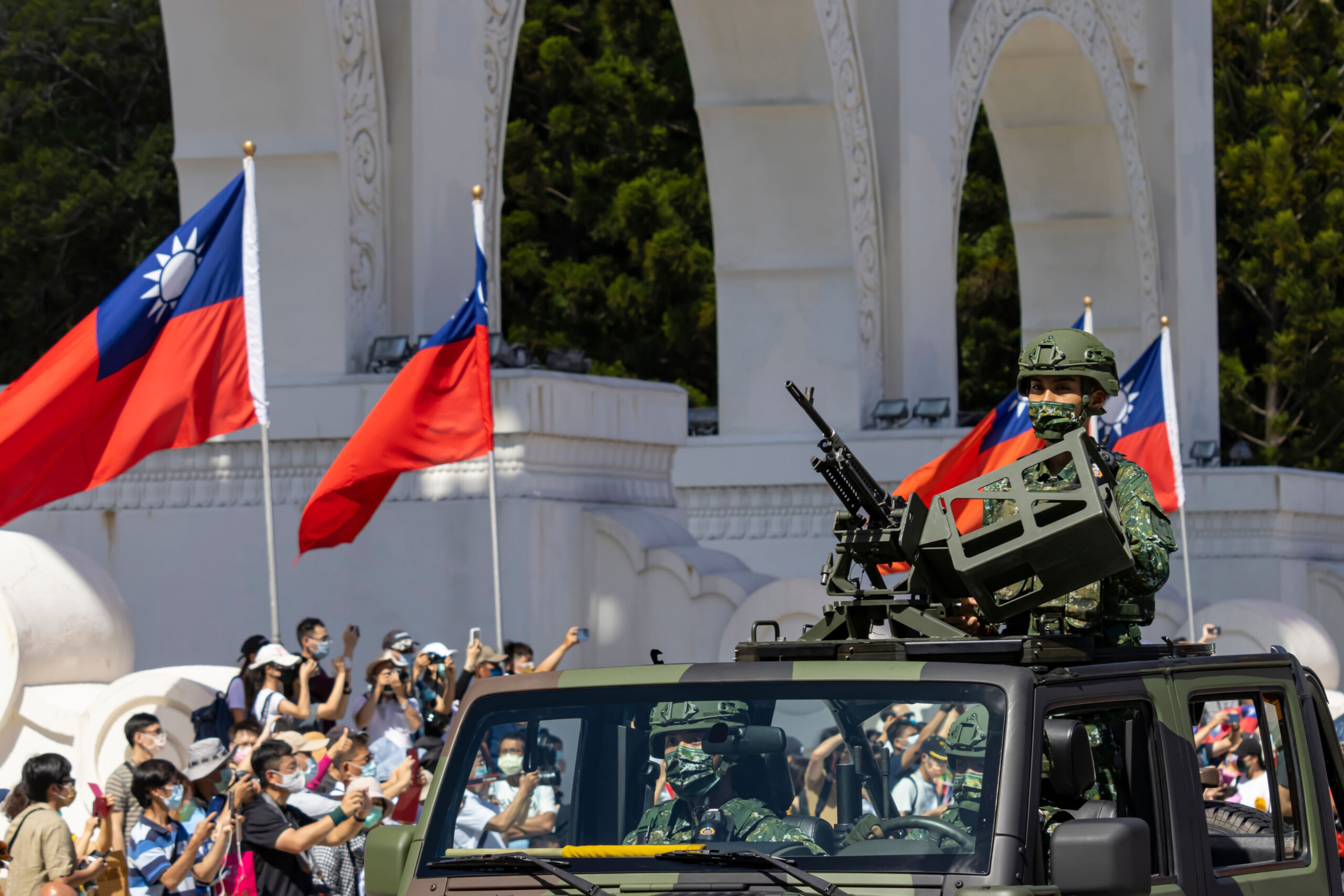Among the many complex issues affecting Taiwan’s defense reforms—including controversies over weapons procurement and the relative prioritization of contesting “gray zone” operations versus preparing for a full-scale invasion—one of the most contentious has been the management of the military’s reserve forces and the ways in which this connects to conscripted military service. Compulsory military service has long been unpopular in Taiwan, and a series of measures implemented in the 2010s saw service times reduced: first, from two years’ universal male military service down to a year, and then from a year down to four months. However, changes have been afoot. Over the past two years, the Republic of China (ROC, 中華民國) Ministry of National Defense (MND, 國防部) has either implemented, or floated proposals for, a range of measures intended to beef up the quality and capacity of the ROC military’s reserve components.
Controversies and Policy Debates Surrounding Conscription and Reserve Forces
The shorter period of four months for compulsory military service became a particular target of widespread derision as a “summer camp” experience that was lacking in any meaningful training for most recruits. Once this term of service was performed, reservists were only required to perform five to seven days of refresher training on alternate years—with the refresher training itself broadly criticized as inadequate, and deferments widely available. This lack of a rigorous conscription and reserve force management program further contributed to harsh commentary among both domestic and foreign critics that Taiwan was not serious about its own defense.
A bureaucratic reorganization for the reserve forces was enacted on January 1, 2022, when the MND combined two legacy organizations to create the “Armed Forces Reserve Command – All-Out Defense Mobilization Agency” (全民防衛動員署後備指揮部). The new consolidated agency was charged with comprehensive management of “planning for mobilization, management, service, civil defense, [and] building reserve capacity” (主要任務為策劃執行動員、管理、服務、民防工作、建立後備潛力). Other noteworthy measures included the spring 2022 introduction of a pilot program to increase training time for selected reservists, as well as publicity efforts to promote the role of reservists in in the 2022 iteration of the annual Han Kuang (漢光) military exercise.
Alongside such initiatives, there have been repeated discussions over the past year regarding the most important, and most controversial, measure of them all: an increase in the mandatory service time for conscripted troops. Public opinion polling in Taiwan conducted in the immediate wake of the Russian invasion of Ukraine indicated a substantial jump in support for increasing the term of compulsory service. Trial balloon announcements regarding this prospect emerged in earnest in March 2022, when a series of senior ROC government officials—including Defense Minister Chiu Kuo-cheng (邱國正) and Interior Minister Hsu Kuo-yung (徐國勇)—made public comments supportive of an increase in service time.
Despite this, the potential expansion of conscripted service has remained a complex issue, in both practical and political terms. Questions have inevitably been raised regarding the capacity of the ROC military to adequately train and effectively incorporate a sudden large influx of new recruits, as well as questions regarding the financial costs of doing so. The increase in conscripted service time also remained a politically fraught issue for the administration of Taiwan President Tsai Ing-wen (蔡英文), particularly due to fears of potentially alienating the youth vote for Tsai’s Democratic Progressive Party (DPP, 民主進步黨). However, once past the “nine-in-one” local elections in November, the Tsai Administration possibly saw greater political room to maneuver on this controversial initiative.
The New Plan to Enhance Conscripted Military Service
Dramatic changes to the existing system for conscription were announced just before the end of the year as a key component of the “Strengthening All-People’s Defense Military Force Restructuring Plan” (強化全民國防兵力結構調整方案, called the “Military Force Realignment Plan” in the government’s own English-language communications). President Tsai formally announced the new policies in an official speech delivered on December 27 from the presidential office. By way of introducing the new plan, Tsai referenced both the increasing threats to Taiwan, as well as the need for greater public commitment to Taiwan’s defense:
Taiwan stands on the frontlines of authoritarian expansion, at the vanguard of the global defense of democracy. Only by preparing for war can we avoid it […] Only by strengthening our self-defense capabilities can Taiwan more effectively protect our national security and interests while garnering further international support. The better prepared we are, the smaller the chance of adventurism from across the strait […] peace depends on national defense, and national defense depends on the people of Taiwan.

Image: President Tsai Ing-wen delivering a speech on December 27, in which she formally announced the “Military Force Restructuring Plan” for Taiwan’s armed forces. The plan includes an increase in the term of universal conscripted military service for young men to one year. (Image source: ROC Presidential Office)
Increasing Service Time and Reorganizing Service Roles
As detailed in both Tsai’s speech and publicity materials from the Executive Yuan (行政院), the core feature of the plan is a provision to increase the term of conscripted military service: from the current requirement of four months to a full year. The new program will go into effect in 2024, and will apply to able-bodied males born on or after January 1, 2005. Another key feature of the plan is the concept of dividing military duties among four broad categories, as follows:
- “Main Battle Troops” (主戰部隊): The volunteer personnel of the active-duty military (currently manned at 180,000, with an end goal of 210,000), who will bear the primary burden of any potential future front-line fighting.
- “Garrison Troops” (守備部隊): Comprised predominantly of conscripted (“mandatory service”) personnel, these soldiers will be oriented primarily towards infrastructure protection and territorial defense.
- “Civil Defense System” (民防系統): “Alternative service personnel” (presumably, to include those deferred from combat service due to medical, conscientious, or other reasons) will be integrated into a public-private partnership system for disaster relief, medical services, and other aspects of civil defense; as well as for unspecified, but presumably logistical, military support operations.
- “Reserve System” (後備系統): A revamped system for military reservists, intended to “replenish our main battle force with retired volunteer soldiers, and our garrison force with former mandatory servicemembers.”
Improving Training and Conditions of Service
In her speech, Tsai also addressed the many criticisms related to the existing lack of rigorous training, stating with startling frankness that “I do know that many citizens feel their time in the military was wasted.” Accordingly, she vowed that:
Future mandatory service training will refer to the training methods used in the United States and other advanced nations […] training in the operation of new types of weapons will be expanded, along with realistic combat training courses, live-fire marksmanship drills, joint exercises, and even civil defense coordination. […] [T]raining in the use of Stinger missiles, Javelin missiles, Kestrel rockets, drones, and other new types of weapons will be added in accordance with mission requirements to meet the needs of modern warfare.
The plan also includes an announced increase in pay for entry-level conscripted personnel, to a value of NTD $26,307 (USD $877) per month—not a huge sum, but still a substantial 400 percent increase from the current paltry rate of NTD $6,510 (USD $207) per month. [1] The announced framework also included other benefits, including the provision that the year of service time would be credited in future civil service pensions, and a vague promise that the Ministry of Education (MOE, 教育部) would study ways in which the “education[al] system can be more flexible in helping conscription-eligible men effectively use their time and transition into future careers.”

Image: “Good Men Fight Together to Protect Our Home”—A government-produced promotional graphic about the new one-year conscription policy. The graphic lists the four broad categorizations of service for military personnel under the new plan: “main battle troops,” “garrison troops,” the “reserve system,” and the “civil defense system.” (Image source: ROC Executive Yuan)
Conclusions
The new “Strengthening All-People’s Defense Military Force Restructuring Plan” announced in December 2022 represents a pivotal change for both the size and organization of the ROC Armed Forces. Doing away with the widely derided four-month period of military training, the new requirements will demand a significantly increased level of commitment from Taiwan society. This will most notably include the personal sacrifice made by the young men who will dedicate a year of their youth to military service, but also the future adjustments to be made by families, the educational system, and the job market. (Indeed, the “All-People’s Defense” part of the plan’s title, and the provisions pertaining to civil defense, acknowledge this fact.)
If implemented as announced, the plan’s quadripartite division of duties would retain the conventional force structure of the Taiwan military—albeit with a substantially greater role for the “garrison troops” and the “civil defense system.” This model thereby implicitly rejects the calls made by some defense commentators for a volunteer defense militia modeled on the “Territorial Defense Force” of Ukraine. It remains to be seen, however, how effectively the shorter-term “garrison troops” will be integrated into service alongside the active duty “main battle troops” of the ROC Army. It also remains unclear what future training commitments might look like for reservists, and to what extent employers and Taiwan society will adapt their expectations in the face of such increased commitments.
Many critics will no doubt say—with solid justifications—that the new plan for enhanced conscripted service still remains inadequate in the face of the rising military threat posed to Taiwan by the Chinese military and Beijing’s irredentist ambitions. However, the new plan should be recognized as a substantial and positive component of Taiwan’s broader defense reforms, as well as a major change for Taiwan society. It also represents a significant expenditure of political capital on the part of the Tsai Administration, and stands alongside other measures—such as substantial increases to the defense budget—that demonstrate the ruling DPP is making a serious effort to boost Taiwan’s overall defense capacity. Much more remains to be done, but the new “Military Force Restructuring Plan” is a major step forward.
The main point: A new plan unveiled by Taiwan’s government in late December indicated intent to increase conscripted military service for young men to one year, beginning in January 2024. The new plan also laid out a broad framework for how these conscripted personnel would be used as “garrison troops” for territorial defense. The new plan represents a major change for Taiwan society and will significantly increase the trained manpower available to the ROC military.
[1] Specifically, in terms of compensation, the plan will provide NTD $20,320 (USD $ 677) per month in pay, and NTD $5,987 (USD $200) worth of benefits as insurance and meal stipends, for a total value of NTD $26,307 (USD $ 877).



